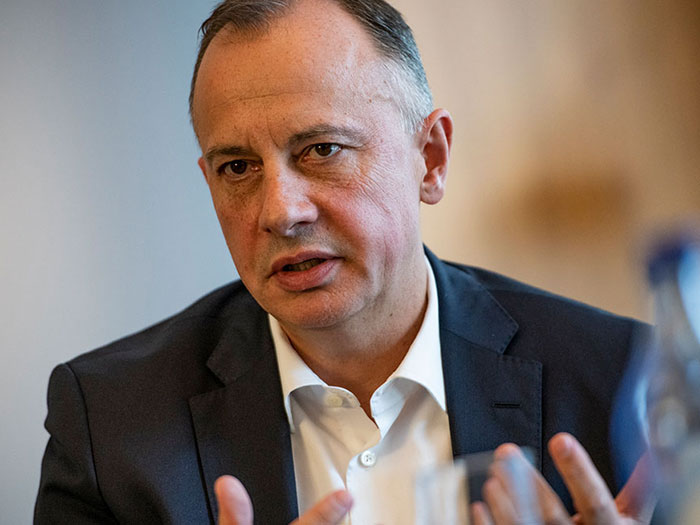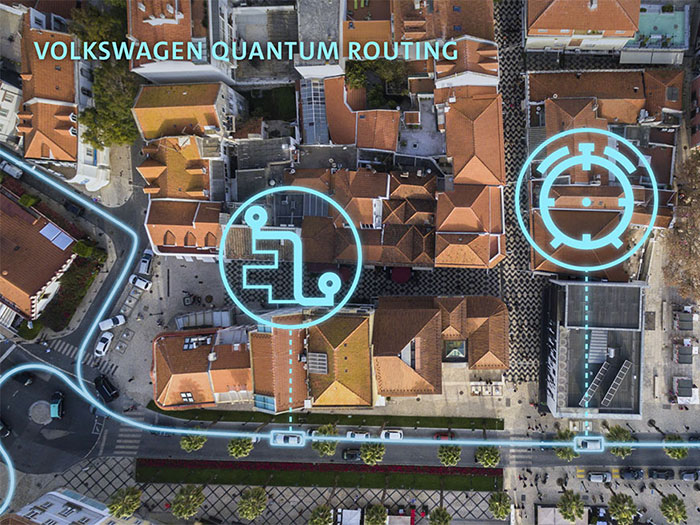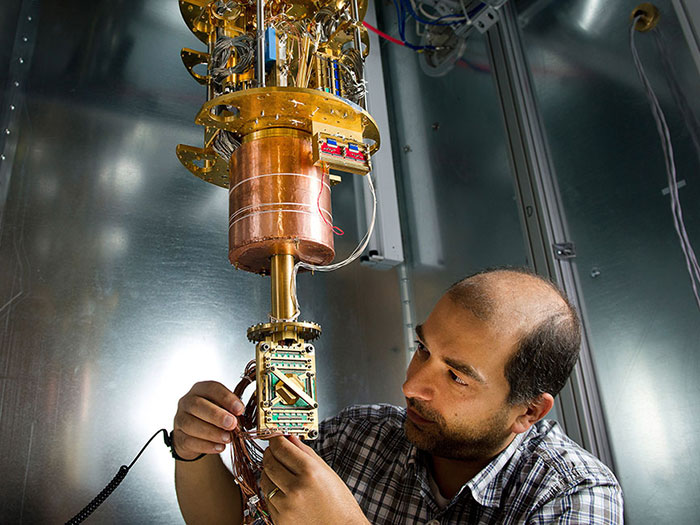Quantum computers for traffic optimisation: a pilot project in Lisbon
Mobility 2.0 also means more efficient journeys. For this purpose, Volkswagen Group launched the world’s first pilot project for traffic optimisation using the potential of quantum computing in the Portuguese capital.

Calculating and recalculating routes in real time to reduce travel times and improve the traffic flow even at peak times, when it matters most - that is the aim of the pilot project that Volkswagen Group launched in Lisbon, taking advantage of the huge calculating power of D-Wave quantum computers.
The trial took place in the first week of November in the Portuguese capital, during the WebSummit conference. Nine MAN buses of the public transport company CARRIS were equipped with a system developed by Volkswagen Group with the support of specialised companies including Hexad and PTV. The buses carried thousands of passengers in Lisbon’s congested traffic using the system, reducing their travel times to a minimum.
“We at Volkswagen want to continue to expand our expertise in quantum computers and develop a deep understanding of how this technology can be used in a meaningful way. Optimising traffic is one such application, because it can provide meaningful support for cities and commuters,” says Martin Hofmann, Volkswagen Group CIO.
Managing traffic in real time

The traffic management system developed by Volkswagen Group is based on two components – passenger number prediction and route optimisation using quantum computing. For predictions, the development team is using big data analysis to identify stops with especially high passenger numbers at certain times. For this purpose, anonymised geo-coordinates and historic passenger flow data are used.
The objective is to offer as many people as possible tailor-made transport services and to ensure optimum utilisation of the bus fleet. For the pilot project in Lisbon, 26 stops were selected and connected to form four bus links. The quantum computer assigned buses an individual route, allowing each one to drive around traffic bottlenecks along the route at an early stage and avoid traffic jams.
Continuous development
Volkswagen intends to continue the development of this predictive component. The idea is that bus operators could add temporary links to their scheduled services to serve stops with the largest passenger numbers. This situation often arises when cities hold sporting events or concerts.
The technology has been designed to be used in any city and with vehicles of any size, and could be offered to taxi companies and fleet operators as well as to public transport companies.
How does a quantum computer work?

The way a quantum computer works is fundamentally different from today’s conventional computers which work with bits - the smallest existing information unit. Each bit can have a value of zero or one. Quantum computers have a different architecture which follows the rules of quantum mechanics and use quantum bits (qubits for short) to solve much more complex calculations.
A qubit can be in the state of zero or one. But this state can be the result of a superimposition of various state combinations (known as superposition), meaning that a qubit can have several states at the same time and store considerably more information than a single bit. Therefore, a quantum computer can operate with all states at the same time in one calculation step. If several qubits are coupled together, the number of possible combinations increases exponentially and so does the computing power.
...and what are its limitations?
Quantum chips will not replace conventional processors because, by their very nature, they depend on a traditional architecture to function. Quantum computers are suited to solve highly complex tasks far more quickly than traditional computers, or to solve tasks that conventional computers cannot solve at all.
Quantum computers are extremely sensitive machines. Any external impact, or even a magnetic field, can disrupt the system. This is why the hardware uses superconductors that have no electric resistance. In order to function, however, they have to be cooled to extremely cold temperatures in the region of absolute zero. These apparatuses are correspondingly complex to use and operate.
Other applications
Quantum computers are also used for the simulation of chemical molecules and the interactions between their elementary particles. The result of this research could include previously unknown materials that are extremely resistant or particularly light and thus suitable for vehicle construction.
Another area where quantum computers could help is battery technology. Understanding what exactly happens in a battery at the atomic level could lead to lighter and even more powerful batteries. These would be findings that would flow directly into the production of battery cells in the Volkswagen Group Centre of Excellence for Battery Research in Salzgitter.
D-Wave and Google strategic partnerships
The Group is cooperating with its technology partners - including D-Wave and Google - who provide the experts with access to their computer systems. In 2016, the Volkswagen team already successfully demonstrated congestion-free route optimisation for taxis in Beijing.
Since then, experts at the Group have continued to develop the algorithm with the aim of making this system of traffic management market-ready.
Source: Volkswagen
